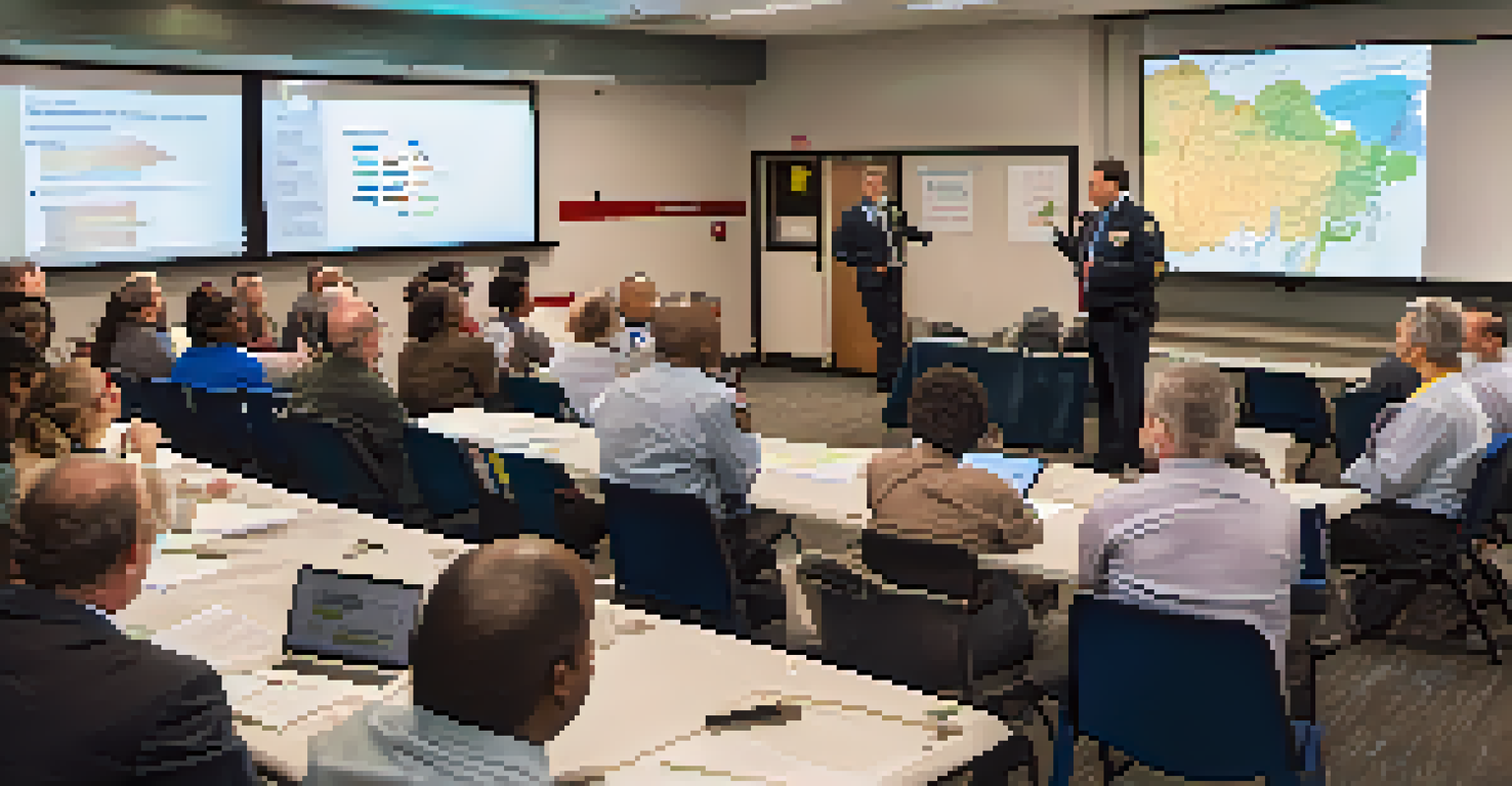Crisis Communications: NYC's Approach to Emergency Management

Understanding Crisis Communications in NYC
Crisis communications involve strategies and tactics used to convey important information during emergencies. In New York City, this process is crucial due to the city's size and complexity. The goal is to ensure that the public receives timely, accurate information to protect lives and property.
In times of crisis, effective communication is not just about information; it's about trust and transparency.
NYC's approach to crisis communications is built on a foundation of preparedness, responsiveness, and transparency. This means having a robust plan in place before a crisis occurs, which allows for quick action when needed. By prioritizing clear communication, the city aims to reduce confusion and panic during emergencies.
The effectiveness of crisis communications can often be measured by public trust. When citizens feel informed and considered, they are more likely to follow safety guidelines and cooperate with emergency responders. NYC's commitment to open lines of communication fosters this trust and encourages community resilience.
The Role of the NYC Emergency Management Department
The NYC Emergency Management Department (EMD) plays a pivotal role in the city's crisis communication strategy. This department is responsible for coordinating responses to emergencies and ensuring that vital information reaches the public. By utilizing various communication channels, EMD can effectively disseminate updates and instructions during a crisis.

One key aspect of EMD's approach is the use of social media platforms. During emergencies, social media serves as a rapid way to inform the public about ongoing situations. By posting real-time updates, the EMD helps to keep citizens informed and engaged, which is essential for maintaining public safety.
Crisis Communication Basics
Crisis communications in NYC focus on timely, accurate information to protect lives during emergencies.
Additionally, EMD collaborates with other city agencies and organizations to enhance communication efforts. This partnership ensures that all parties are aligned and can deliver consistent messaging to the public. Together, they create a comprehensive network that supports effective crisis response.
Community Preparedness Initiatives
Community preparedness is a cornerstone of NYC's crisis communication strategy. The city actively encourages residents to participate in emergency preparedness programs, which equip them with essential skills and knowledge. These initiatives help individuals and families understand what actions to take in various crisis situations.
Preparedness is the key to resilience in any community, especially in a bustling city like New York.
One popular program is the Ready NYC initiative, which provides resources and training to help people prepare for emergencies. This includes creating emergency plans, assembling disaster supply kits, and understanding evacuation routes. By fostering a culture of preparedness, NYC empowers its citizens to take action when crises arise.
Moreover, community engagement plays a vital role in these initiatives. By involving local organizations and residents in preparedness efforts, NYC ensures that the diverse needs of its population are met. This collaborative approach strengthens the city's overall resilience during emergencies.
Leveraging Technology for Crisis Management
Technology has revolutionized crisis communications in NYC, allowing for more efficient and effective responses. The city employs various tech tools, including mobile apps and alert systems, to keep residents informed during emergencies. These innovations streamline communication and facilitate timely updates.
One notable tool is the Notify NYC system, which sends real-time alerts to subscribers via text, email, or phone calls. This system enables the city to reach a wide audience quickly, ensuring that essential information is delivered as events unfold. Such capabilities are vital for managing public safety in a fast-paced urban environment.
Technology Enhances Responses
Innovative tools like Notify NYC allow for efficient information dissemination, improving public safety during crises.
In addition to alerts, NYC utilizes data analytics to assess risks and tailor communication strategies. By analyzing previous emergencies and public responses, the city can refine its approach and improve future crisis communications. Embracing technology not only enhances response efforts but also fosters a sense of community awareness.
The Importance of Clear Messaging
Clear messaging is crucial during a crisis, as it helps prevent misinformation and panic. NYC focuses on delivering straightforward, actionable information to its residents. This clarity is essential in guiding the public on what steps to take during emergencies, thereby enhancing overall safety.
To achieve this, the city uses plain language and avoids technical jargon when communicating with the public. By making information accessible, NYC ensures that everyone, regardless of background or education level, understands what is required. This approach minimizes confusion and encourages compliance with safety measures.
Furthermore, NYC continually evaluates the effectiveness of its messaging strategies. By gathering feedback from the community, the city can identify areas for improvement and adapt its communication methods accordingly. This commitment to clarity not only builds trust but also strengthens community resilience.
Training and Drills for Effective Response
Regular training and drills are integral parts of NYC's crisis communication strategy. These exercises prepare city officials, emergency responders, and community members to act swiftly and effectively during real emergencies. By simulating various scenarios, participants can practice their responses and identify potential areas for improvement.
One of the most notable training programs is the annual citywide emergency drill, which involves multiple agencies and organizations. This collaborative effort allows for a comprehensive assessment of communication protocols and response strategies. Such drills not only enhance preparedness but also foster teamwork among different entities involved in crisis management.
Community Engagement Builds Trust
Active community involvement in preparedness initiatives fosters trust and resilience among NYC residents.
Additionally, NYC emphasizes the importance of ongoing education in crisis communications. Workshops and training sessions are offered to city employees, ensuring they are well-versed in the latest strategies and tools. By investing in continuous learning, NYC strengthens its ability to manage crises effectively.
Building Community Trust and Engagement
Building trust within the community is a fundamental aspect of NYC's crisis communication efforts. When residents feel connected to their city and its leaders, they are more likely to engage with emergency communications. NYC prioritizes transparency and consistency in its messaging to cultivate this trust.
Engagement initiatives, such as town hall meetings and public forums, provide opportunities for residents to voice their concerns and ask questions about emergency management. These interactions help city officials understand community needs and expectations during crises. By fostering open dialogue, NYC strengthens relationships with its citizens.

Moreover, the city actively seeks feedback on its communication strategies. Surveys and community outreach programs allow residents to share their experiences and suggest improvements. This feedback loop not only enhances crisis communications but also reinforces the idea that the community's voice matters.